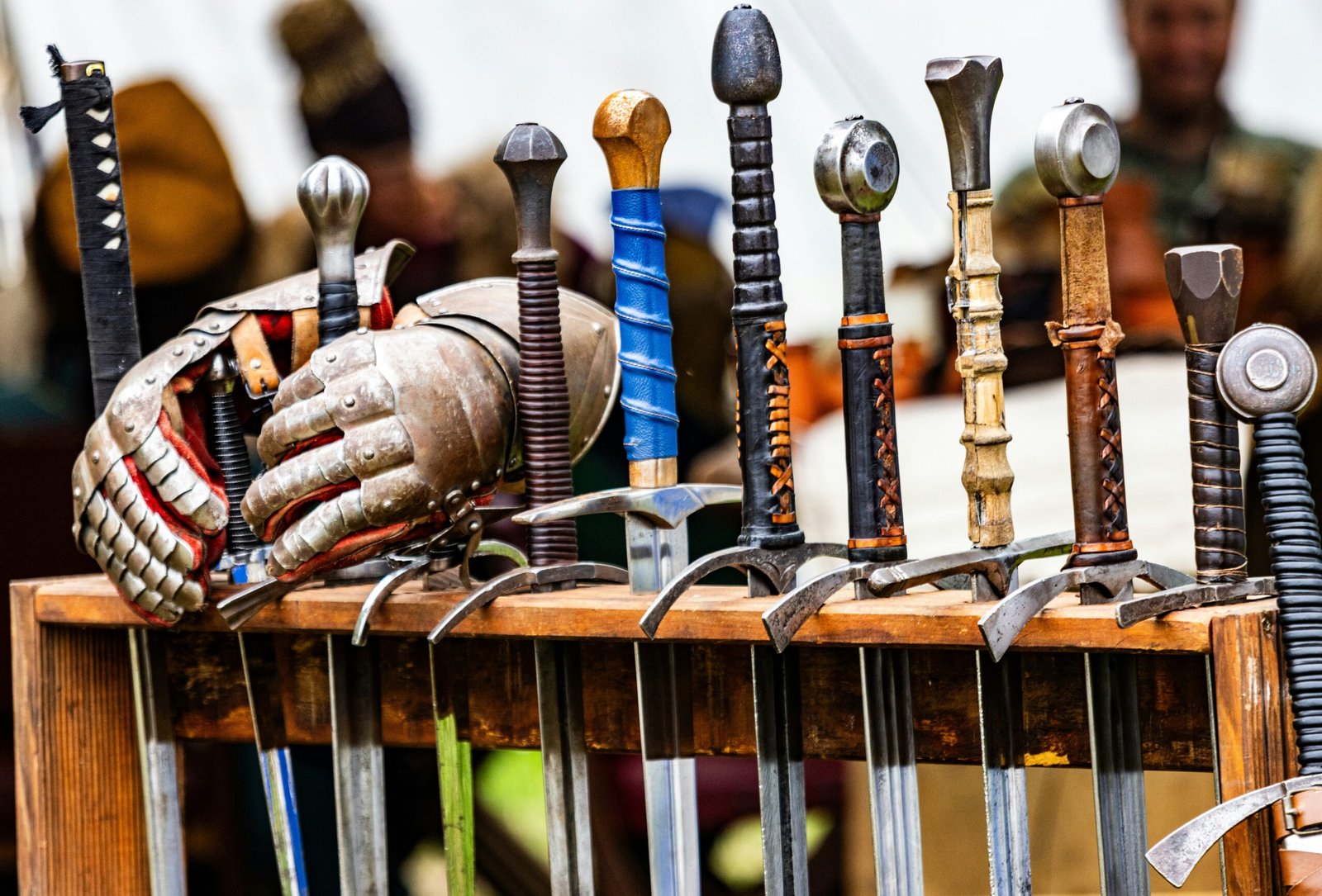
Origins of Steel Swords
The origins of steel swords can be traced back to the Iron Age, when the development of advanced steel forging techniques marked a significant evolution in weaponry. Prior to this period, many cultures relied on bronze for their weapons, which, while effective, had limitations concerning strength and durability. The transition from bronze to iron represented a pivotal change, as iron offered greater hardness and could be made into swords that were more effective in battle. Historical evidence suggests that the Hittites, a prominent civilization located in Anatolia, were among the earliest practitioners of ironworking, showcasing a remarkable understanding of metallurgy that laid the groundwork for future advancements.
The advent of steel swords was further propelled by innovations in metallurgical processes. Early steel production involved the carburization of iron, a process through which carbon was introduced into the iron to enhance its properties. This technique enabled blacksmiths to produce blades that possessed the necessary toughness and edge retention for combat. Cultures such as the Indians, Chinese, and Celts each contributed their unique insights into sword-making, leading to the evolution of different steel types, such as Damascus steel, known for its distinctive patterns and exceptional toughness.
Evolution and Design Through the Ages
The evolution of steel swords is a fascinating chronicle that spans multiple epochs, reflecting changes in combat needs, technological advancements, and cultural influences. Beginning with ancient civilizations, the Roman gladius exemplified the martial efficiency of the time. This short sword was designed for thrusting in close combat, featuring a double-edged blade that made it effective in the disciplined formations of Roman legions. Its design typified the utilitarian approach of Roman warfare, demonstrating that functionality was paramount in the construction of steel weapons.
As we progress to the Viking Age, the Viking sword encapsulates the transition towards longer and more versatile blade designs. These swords, often characterized by their broad blades and distinctive hilt designs, became an integral part of Norse culture. The craftsmanship demonstrated in these steel swords not only served practical combat functions but also illustrated the artistry and symbolic significance embedded in these weapons. The artistry included intricate designs on the hilts, often engineered for a secure grip and tactical advantage during skirmishes.
The medieval period introduced yet another evolution in sword design, notably with the proliferation of the longsword. This sword was marked by its extended blade and cross-guard, allowing for both slashing and thrusting capabilities. Its versatility made it a favorite among knights and foot soldiers alike. The design variations became more pronounced, with regional differences emerging due to cultural influences and available resources. The craftsmanship during the Renaissance further refined these elements, with an emphasis on aesthetics and blade performance. Artisans began to experiment with hilt designs, embellishments, and balance, resulting in swords that were not only functional weapons but also reflections of status and artistry.
Throughout these developmental stages, the interplay of various factors—such as combat needs, material availability, and cultural preferences—continued to shape the evolution of steel swords. Each design iteration captures a glimpse into the societal context of its era, marking an enduring legacy that remains influential in modern sword-making practices.
The Role of Swordsmiths and Forging Techniques
The artistry and craftsmanship of swordsmiths have played a crucial role in the evolution of steel swords throughout history. These skilled artisans employed various forging techniques that significantly influenced the effectiveness and aesthetic appeal of their blades. Among the most notable techniques were pattern welding and folding, each contributing unique properties to the swords produced. Pattern welding involved layering different types of steel, then twisting and folding the metal to create intricate designs and enhance the blade’s strength and flexibility. This method was prevalent in the creation of Viking swords, known for their durability and sharpness.
Folding is another ancient technique characterized by repeatedly heating and hammering steel to eliminate impurities, resulting in a denser and stronger material. This method is commonly associated with Japanese swordsmiths, whose meticulous folding processes gave rise to the renowned katana. The exceptional qualities of these swords were a result of the precise control over the folding process, enabling smiths to attain high carbon content in their blades, which contributed to their ability to hold a keen edge.
Becoming a master swordsmith required rigorous training and dedication. Apprenticeships extended for years under the guidance of experienced smiths, where aspiring artisans honed their skills in metallurgy, design, and mastery of tools. The intricate nature of sword making demanded not only technical precision but also a deep understanding of the materials used, reflecting the profound artistry intertwined with the profession. This dedication to craftsmanship and the innovative techniques developed over centuries have left an enduring legacy in the art of sword making.
